DSLR Saturn, Dumbbell, Globular Clusters, Pluto;
iPhone NightCap Pro Dumbbell, Ring, Globular Cluster; Visitor
Posted: 8 July 2015
Monsoon season cloudy skies continued Saturday, 4 July, through Tuesday, 7 July. Although there was heavy rain in the area on Sunday, 5 July, only a little rain (0.05") occurred here. The sky finally cleared on Tuesday, 7 July.
|
Open: Tuesday, 7 July 2015, 1922 MST Temperature: 94°F |
Session: 845 Conditions: Mostly clear, breezy |
1931 MST: viewed Venus, then Jupiter, 83X. Seeing was not good but the Great Red Spot was visible on Jupiter. 1937 MST: sunset. 1938 MST: viewed Jupiter, then Venus, 166X. Next, viewed Saturn, 166X.
1944 MST: began preparing for D7200 DSLR imaging in case the clouds stayed away.
Crepuscular rays were very prominent in the northwestern sky, as seen in this iPhone 5s photo:
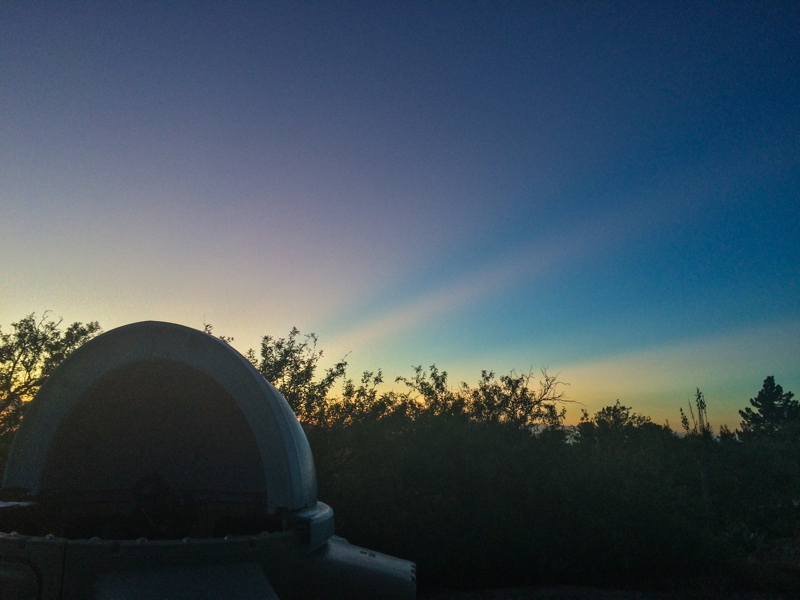
2001 MST: began doing an AutoStar One Star alignment for the 8" LX200-ACF. The previous alignment had been messed up back in June due to a handcontroller glitch, but this was the first night the weather cooperated since then. 2013 MST: completed the alignment.
Slewed to Saturn and began preps for eyepiece projection 222X imaging. Did a focus test on the star Antares using the Bahtinov Mask. Did 20 second long HD video recordings of Saturn, 1.3X crop factor, 60 fps, 1/60 sec, at various ISO settings. This is a stack of the ISO 10000 recording (1239 frames):
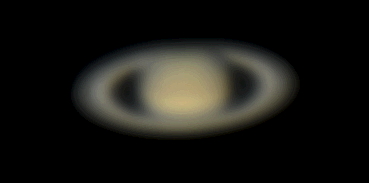
2037 MST: took this iPhone NightCap Pro photo (cropped) of the western sky showing Regulus, Venus, and Jupiter:
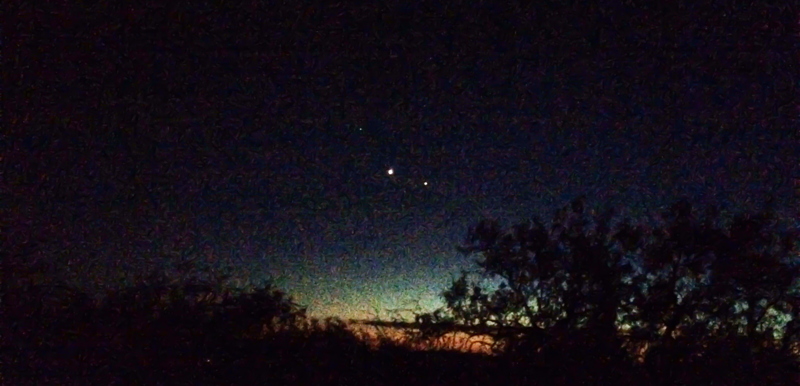
Mouseover or tap on image for labels
2037 MST: terminated the first of three Kissing Bugs seen this night (while listening to music from the movie "Terminator Genisys"). Kissing Bugs got a late state this season due to a colder than normal May. Normally, they would have been gone before the end of June.
2042 MST: slewed to M27 (Dumbbell Nebula). It was faintly visible at 83X. 2043-2047 MST: terminated Kissing Bug #2 and #3. 2052 MST: added the Televue 2X PowerMate and viewed M27 at 166X. Then slewed to Deneb, mounted the D7200 DSLR at prime focus + 2X PowerMate, and did a focus test image. After Astronomical Twilight ended, I did several 1 minute, unguided, exposures of M27 at various ISO settings. This is the ISO 25600 image:
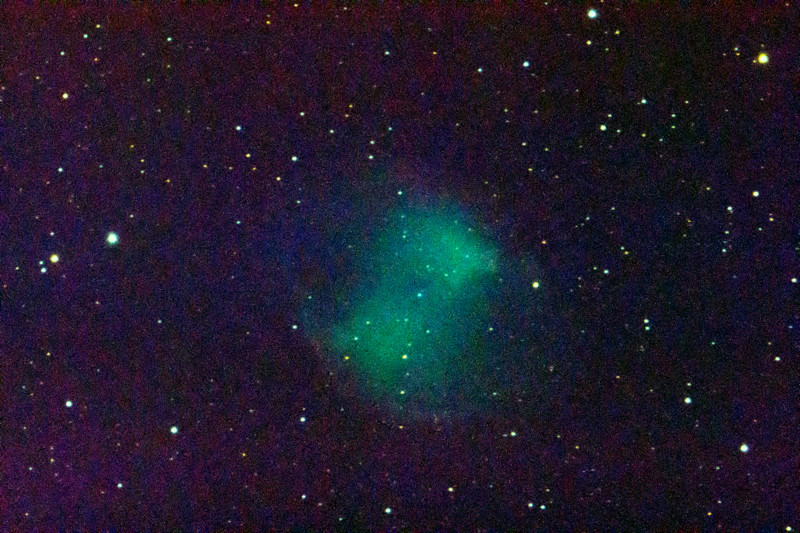
Not my best image of M27; that's on my Messier Catalog Astrophotography page.
I removed the DSLR and PowerMate and mounted the iPhone 5s on the 8" telescope for afocal imaging at 77X using the MX-1 Afocal Adapter. These Deep Sky Object images were taken using NightCap Pro, Long Exposure, Light Boost, ISO 8000, 1/2sec, 1 minute exposures:
M27 Dumbbell Nebula
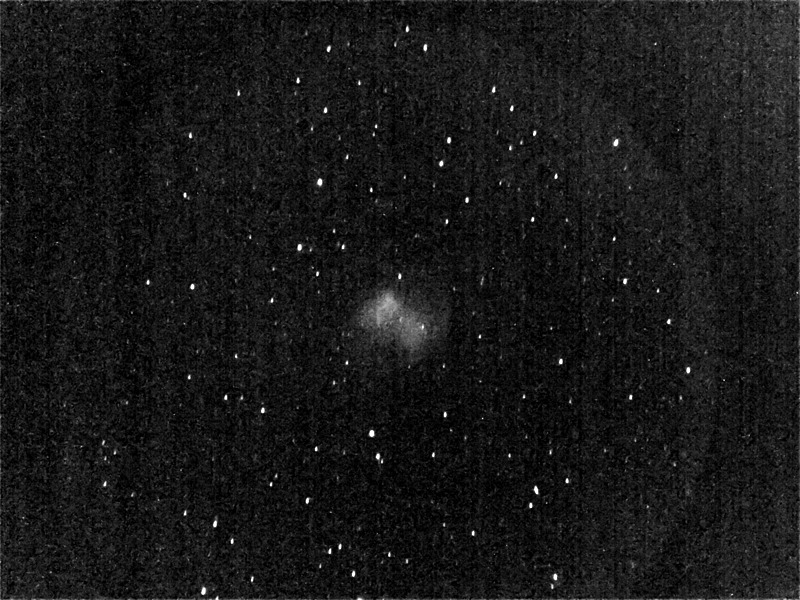
M57 Ring Nebula
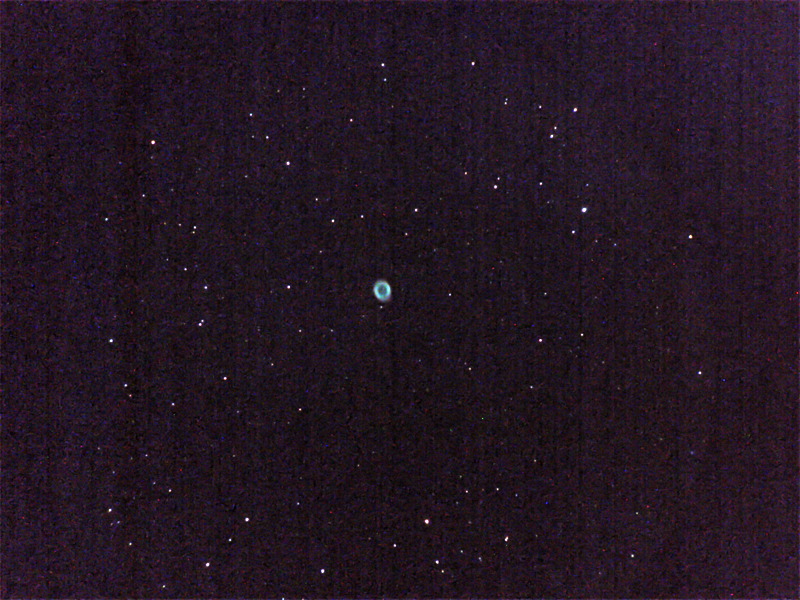
M22 Globular Cluster
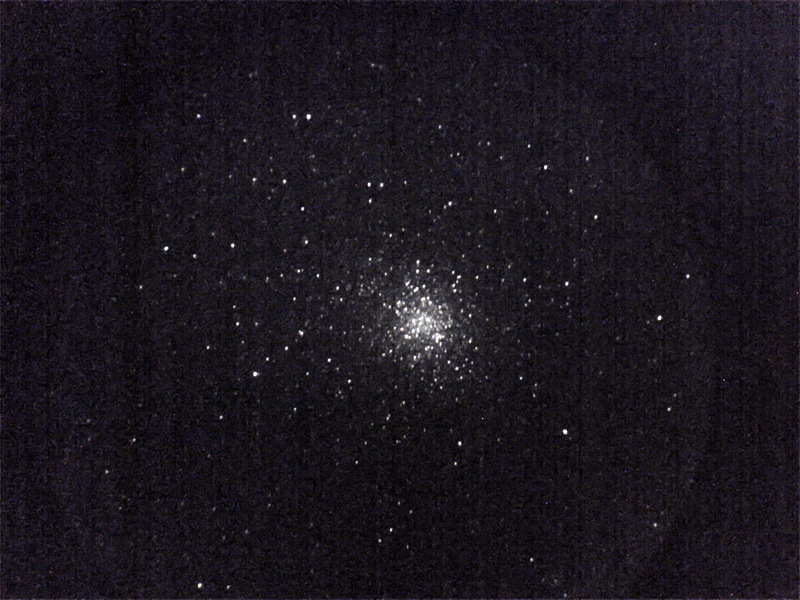
2151 MST: slewed to Antares, removed the iPhone and MX-1 adapter, mounted the D7200 DSLR at prime focus, and did a focus test image. Then did 30 second, unguided, ISO 3200 exposures of the globular clusters M4, M10, M12, and M22:
M4
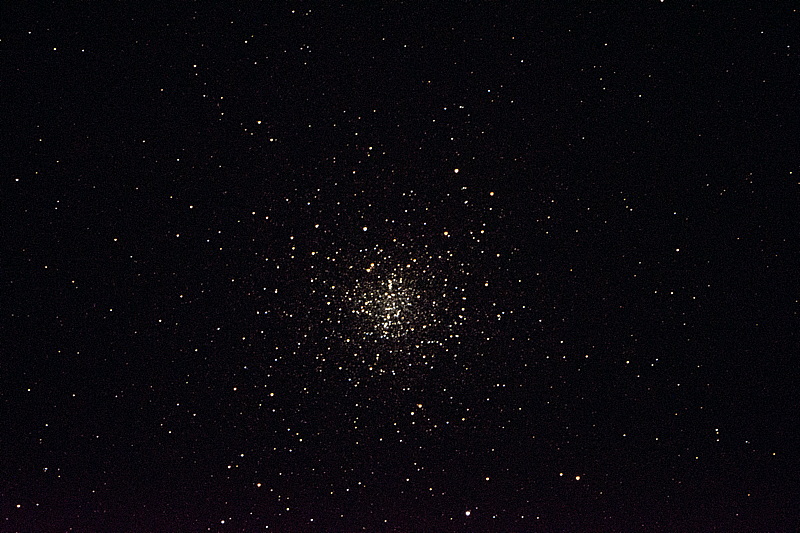
M10
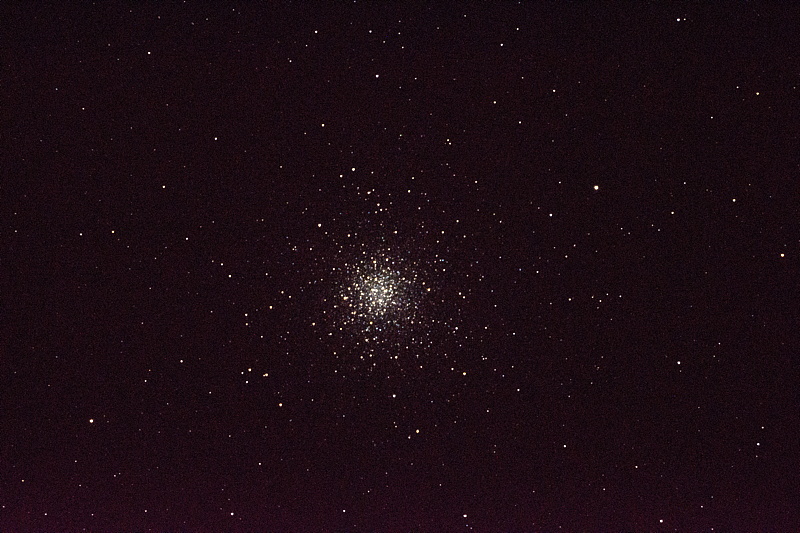
M12
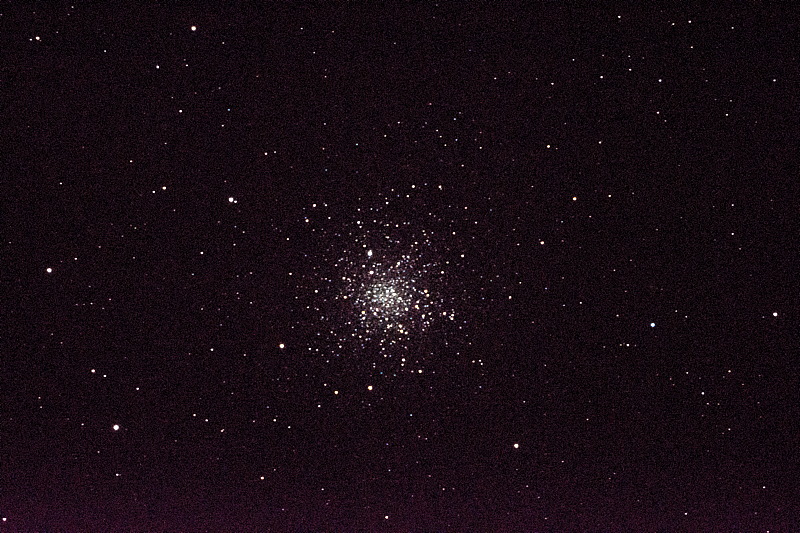
M22
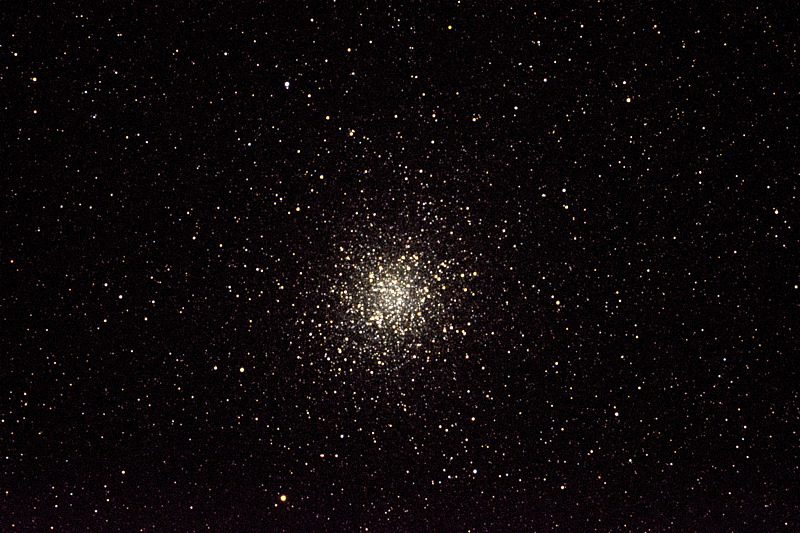
2221 MST: completed DSO imaging. Slewed to Pluto using the AutoStar. Opposition was 6 July 2015. Began waiting until the planet was a little higher before imaging it.
While waiting to begin Pluto imaging, this visitor arrived in the observatory:
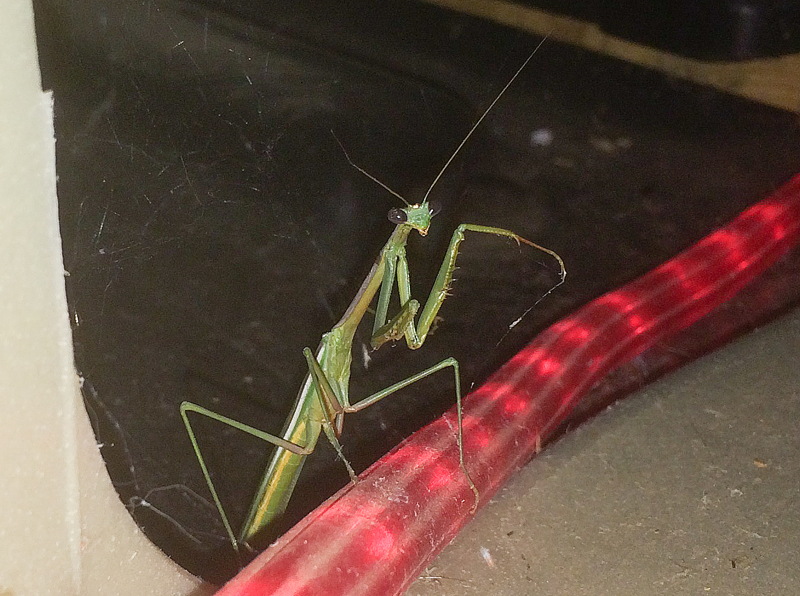
Click or tap on image for larger version
2250 MST: powered on the GC Wi-Fi Adapter and used SkySafari Pro on the iPhone to GOTO Pluto. This SkySafari Pro screen capture shows the location of Pluto:
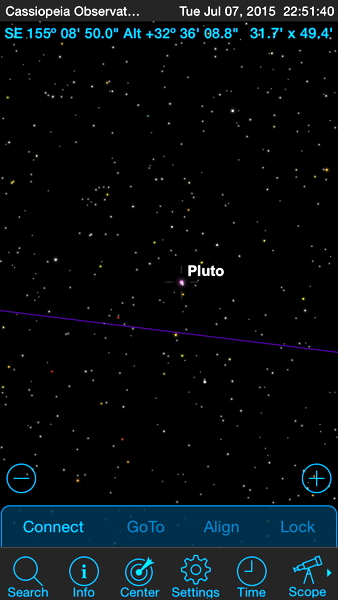
2300 MST: this 1 minute, unguided, ISO 6400, (hopefully) shows the planet Pluto. The orientation is approximately the same as the SkySafari screen capture. Can you find Pluto? If not, rollover (or tap) the image to see my guess. (By the way, somewhere in the image but not visible is the New Horizons spacecraft on its way to its close approach to Pluto on 14 July 2015.)
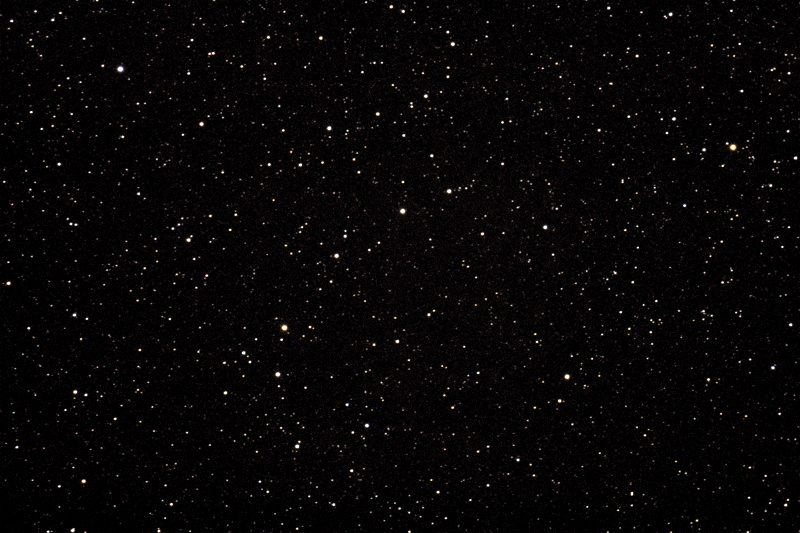
Mouseover or tap on image to see label
I plan to take additional images of Pluto over the next two nights (weather permitting) to show the motion of the planet.
2301 MST: ended imaging. Removed the camera from the 8" and viewed Saturn, 83X. Then began closing up for the night. It was wonderful to be back in the observatory again for a good session after all the recent cloudy nights.
|
Close: Tuesday, 7 July 2015, 2323 MST Temperature: 78°F |
Session Length: 04h 01m Conditions: Clear |
Comments are welcome using Email. If you are on Twitter you can use the button below to tweet this report to your followers. Thanks.
Cassiopeia Observatory Home Page
Copyright ©2015 Michael L. Weasner / mweasner@me.com
URL = http://www.weasner.com/co/Reports/2015/07/08/index.html
